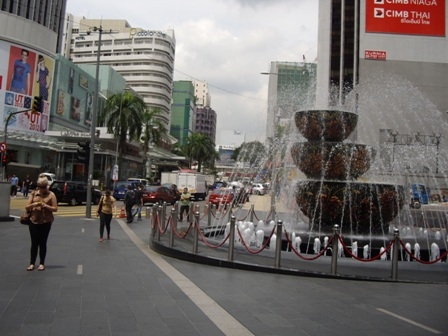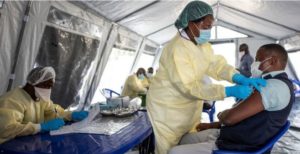Tourist arrivals in Malaysia rise modestly by 1.2% from Jan-May

PUTRAJAYA- Malaysia recorded an overall growth of +1.2% tourist arrivals with 9,438,592 tourists for the first five months of 2012 as compared to 9,323,827 for the same period last year, according to the Tourism Minister, Dato’ Sri Dr. Ng Yen Yen.
ASEAN region still contributed the largest number of tourists to Malaysia with 73.4% of the total arrivals. The positive growth come from Indonesia (+19.3%), Philippines (+41.7%), Vietnam (+35.2%), Myanmar (+6.9%) and Laos (+19.9%). Other notable progressive medium and long haul markets include Saudi Arabia (+50.7%), China (+34.1%), Japan (30.6%), Russia (25.8%), Kazakhstan (25.2%), Denmark (14.4%) and India (+7.8%).
Total receipts by tourists from January to May 2012 rose by +1.9%, generating RM 21.8 billion to the country’s revenue as compared to RM 21.4 billion in 2011. The tourists’ per capita expenditure for that period is estimated at RM 2,309 an increase of 0.7% as compared to RM 2,294 in 2011.
The minister added that in line with the Malaysia Tourism Transformation Plan 2020 towards achieving 36 million tourist and 168billion in receipts by 2020, it is important for Malaysia to shift its focus on growing yield per tourist rather than to rely heavily on growth in tourist arrivals. “To attract the higher yield segment, we will need to enhance connectivity to key priority markets.” For a start, Tourism Malaysia works to increase flight frequencies to 6 priority countries namely China, India, Japan, South Korea, Australia and Taiwan besides developing an air-rights allocation framework to facilitate efficient development of these key routes and others.
One of the most successful programs that have been identified by the Ministry to develop rural based tourism is the Homestay Program. The tourism program recorded a significant increase with 38.4% of occupancy rate compared to 24.9% for the same period last year. A total of 133,689 tourists visited our homestay from January to May 2012 of which 110,322 were domestic tourists and the rest 23,367 were foreigners. This is a 70.7% increase compared to the same period last year where we only received 78,333 tourists. Tourist receipts from homestay program for the first five months of 2012 also proliferated to RM 7,376,446.50 (+53.1%) compared to RM4, 817,158.30 in January to May 2011. Increased spending by these tourists has stimulated the rural economy. The homestay tourism program has encouraged local communities to be a part of rural based tourism whilst maintaining their traditions and identities.
Recognized as one of the National Key Economic Areas, the tourism industry remains as one of the major contributor to Gross National Income, foreign exchange earnings and employment. In 2011, tourism ranked seventh largest contributor with a GNI total of USD12.3 billion and the third largest foreign exchange earner after manufacturing and palm oil. The Malaysian tourism industry in 2010 provided 1.8 million jobs (15.9%, share of employment in tourism to total employment). Amongst the 12 Entry Point Projects are duty free shopping, luxury tourism, designating KLCC–Bukit Bintang area as a vibrant shopping precinct, improving business tourism and increasing the supply of 4 & 5 star hotel rooms, etc.
The percentage on tourist shopping recorded from January to May 2012 shows 32.3% (RM7.04 billion) of the total tourist receipts. This is an increase compared to 30% last year. The covered walkway connecting Bukit Bintang and KLCC completed early this year to facilitate shopping has shown a positive impact.
To attract high yield tourists, we need quality four & five star hotel rooms. Currently there are 59,804 four & five star hotel rooms available in Malaysia. By 2020, 37,000 additional four & five star hotel rooms are required. The Ministry of Tourism targets to increase 3000 four & five star hotel rooms in Malaysia as at end 2012. Currently 71% of the target is achieved with 2,123 rooms completed. The government’s liberalization policies and lucrative tax incentives have resulted in domestic and foreign investments on hospitality assets across Malaysia.
In order to grow the tourism industry, efforts have been intensified towards enhancing existing tourism products and developing new, creative and innovative tourism products. This included the “1Malaysia International Shoe Festival 2012”, “1Malaysia International Tourism Exchange 2012”, “1Malaysia Contemporary Art Tourism 2012” and the recently concluded “1Malaysia International Tourism Night Floral Parade 2012”. The Ministry of Tourism’s ‘Malaysia: Truly Asia’ branding is recognised worldwide and the United Nations World Tourism Organisation (UNWTO) has ranked Malaysia the ninth most travelled to destination in the world.














